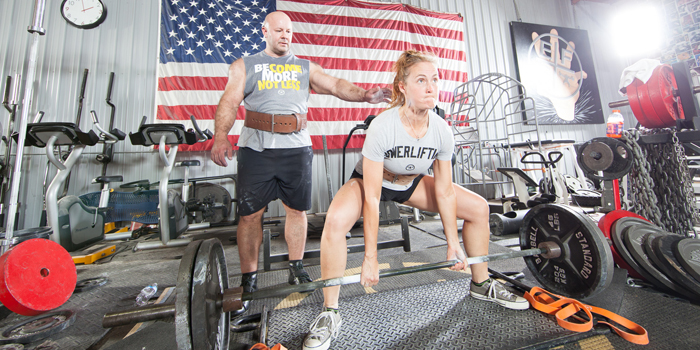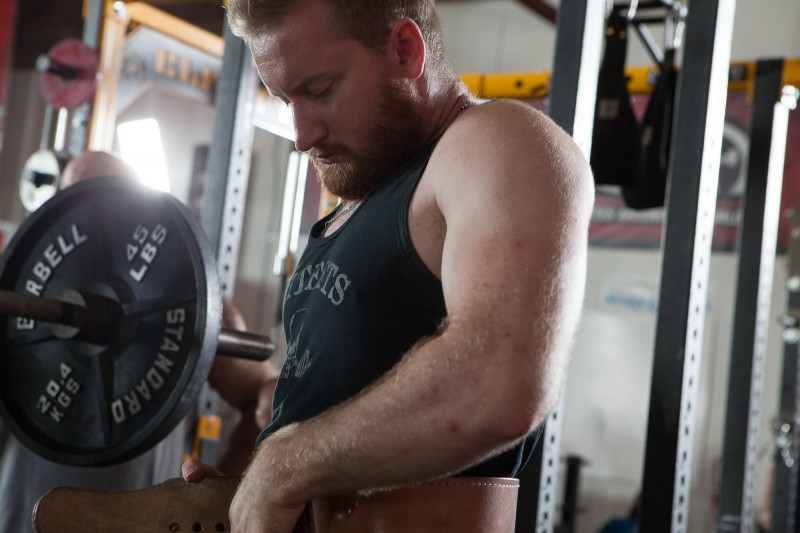
“How often should I train each muscle group?”
This is a common question that I often receive from athletes, fitness clients, and coaches and trainers that I work with. Almost any textbook on training will include some guideline for how often to train, but ultimately the answer lies in how you ride the stress-recovery wave. Any good session imposes a stress on the body, depletes your resources, and reduces performance. From this state of depletion, we all have to recover and super-compensate to be ready for the next session. One major difference between athletes is how long it takes to become ready for the next workout.
RELATED: Understanding the Strategy of Periodization
If you feel that you are not ready for your next workout, the typical solution might be to train less. However, you can also attempt to recover faster, eloquently expressed in the following ways:
“Most athletes are not over-training, they are under-recovering.” — Dr. Rob Rakowski
“You can let it happen or you can make it happen.” — Charles Staley
The bottom line is that the ideal training frequency may not be as cut and dry as we would like it to be. Two newer research articles and one classic book provide some guidelines on training frequency:
- When training is volume equated, twice per week training results in greater increases in muscle mass compared to once per week training. However, once per week training results in solid gains. (1)
- There is no solid data to indicate if three times per week training results in greater gains in hypertrophy than two times per week training. (1)
- Maximum improvement in strength from the muscle group being trained is a two-second maximal isometric contraction once per day. (3)
- Higher frequency training is associated with the possibility of overtraining and it might be beneficial to periodize training frequency. (1,2)
In addition to the above resources, it is worth noting that Pavel Tsatsouline has been a strong promoter of high frequency training with his Power to the People and Grease the Groove programs.
A part of my work is to teach courses for individuals who would like to become certified personal trainers. They are often well read, but their minds are looking for straightforward answers to questions. When they ask the question, “How often should I train each muscle group?” they expect an answer that is one constant number. For example, they want to hear an answer such as "once per week" or "twice per week."
However, as indicated by the fourth point above, a real key to progress might lie in not always using the same training frequency (i.e. periodizing it). The 5-4-3-2-1 program is a program that aims to take advantage of periodizing training frequency by training one lift five times per week, one lift four times per week, one lift three times per week, one lift twice per week and one lift once per week. Every few weeks, when a plateau is reached, the lifts are rotated so the high frequency lifts now are trained with a low frequency and vice versa.
Who could benefit from the 5-4-3-2-1 program? Different options are provided below, but fundamentally the 5-4-3-2-1 program is for you if:
- Your goal is muscular size, strength, or a combination thereof
- You train five days per week
- It makes sense for you to focus all your efforts on five major exercises
- You have trained your exercises once or twice per week for the last few months or longer
How to Get Started with the 5-4-3-2-1 Program
Step 1: Pick five lifts (or patterns).
Below is a well-rounded group of five patterns, but you can choose any pattern that suits your goals.
1. Lower Body Hip-Oriented — LB (Hip)
Examples: Good Morning, Stiff-Legged Deadlift, Conventional Style Deadlift
2. Lower Body Knee-Dominant — LB (Knee)
Examples: Olympic Style Squat, Front Squat, Hack Squat
3. Upper Body Push — Push
Examples: Bench Press, Overhead Press, Dip
4. Upper Body Pulling — Pull
Examples: Pull-Up, Lat Pulldown, Seated Row
5. Grip or Trunk-Oriented — G/C
Examples: Farmers Walk, Get-Ups, Abdominal Rollout
Step 2: Choose your preferred frequency for each pattern based on which aspect you want to improve the most.
When you choose the frequency of each pattern then think in terms of three categories:
You can choose the frequency for your chosen patterns based on one of two major strategies:
- Create an even stimulus throughout the body.
- Train a specific area as hard as possible.
The first example below shows a fairly evenly distributed stimulus throughout the body.
In the next example, there is a strong upper body emphasis by assigning an upper body pattern to both high frequency spots in the program.
In this next example, there is a strong lower body emphasis by assigning a lower body pattern to both high frequency spots in the program.
In this example, there is a strong trunk emphasis by assigning grip/core to the high frequency spot in the program.
Which of the two strategies you choose should be based on your goal but also your work capacity as it applies to one workout. Before you choose the lower body dominant template, you want to be sure that your body—for example, your lower back—can handle both the squat and deadlift in the same workout.
Based on the lower body dominant example, here is what your weekly template would look like. You can switch up the exercise order or use any superset structure, if any at all, that you prefer.
Based on your goals, work capacity, and time to train, you can choose more than one exercise for a specific frequency. For example, you could include both a pull-up and seated row as pulling exercises. Additionally, the 5-4-3-2-1 program will also work with four or three weekly training days.
Step 3: Choose specific exercises and structure them for each training day.
Let’s proceed with the lower body example. The next step is to choose specific exercises. As far as choosing specific exercises, here are two main guidelines:
- You could use the exact same variation on each training day (in which case you should definitely vary the repetition bracket).
- You could use different variations of the same pattern on each day (in which case you could keep the repetition bracket constant between training days).
In the example below, variation between each training day is applied.
Day 1
A1. Conventional Style Deadlift
A2. Overhead Barbell Press
A3. Chin-Up
Day 2
A1. Narrow Stance Good Morning
A2. Barbell Bench Press
A3. Abdominal Rollout
Day 3
A1. Conventional Style Deadlift from Deficit
B1. T-Bar Row with Chest Support
C1. Front Squat
Day 4
A1. Wide Stance Good Morning
A2. Overhead Dumbbell Press
A3. Farmers Walk
Day 5
A1. Snatch Grip Deadlift
A2. Dumbbell Bench Press
A3. Pull-Up
Step 4: Choose repetition brackets for each training day.
Choose the repetition brackets and overall volume based on your goals (size, strength, or a combination) as well as your work capacity. A primary guideline is to divide whatever weekly volume you choose between the different training days.(2)
You really have to choose the specifics based on your needs and preferences. With that said, here is an example for a combination of size and strength. The two major principles applied are:
- A lower repetition bracket is used to train the exercises that are in the program with a high frequency.
- A slightly different repetition bracket is applied to the different days of the same exercise (type).
Day 1
A1. Conventional Style Deadlift: 5 x 2-4
A2. Overhead Barbell Press: 5 x 5-7
A3. Chin-Up: 5 x 10-12
Day 2
A1. Narrow Stance Good Morning: 5 x 4-6
A2. Barbell Bench Press: 5 x 5-7
B1. Abdominal Rollout: 5 x 10-12.
Day 3
A1. Conventional Style Deadlift from Deficit: 5 x 5-7
B1. T-Bar Row with Chest Support: 5 x 10-12
C1. Front Squat: 1 x 15-20
Day 4
A1. Wide Stance Good Morning: 5 x 5-7
A2. Overhead Dumbbell Press: 5 x 8-10
B1. Farmers Walk: 5 x 1 minute (or equivalent distance)
Day 5
A1. Snatch Grip Deadlift: 5 x 3-5
A2. Dumbbell Bench Press: 5 x 8-10
A3. Pull-Up: 5 x 10-12.
Use the program until you feel that you have reached a plateau. Then do an active rest week and spend that time creating your next program. Every time that you create your program, choose the exercises and frequencies based on your goal. However, it would generally be beneficial to rotate a high frequency exercise to a low frequency and a low frequency exercise to a high frequency.
References
- Schoenfeld BJ, Ogborn D, Krieger JW. Effects of Resistance Training Frequency on Measures of Muscle Hypertrophy. Sports Medicine. Sports Medicine. 2016
- Dankel SJ, Mattocks KT, Jessee MB, Buckner SI, Mouser JG, Counts BR, Laurentino GC, Loenneke JP. Frequency: The Overlooked Resistance Training Variable For Inducing Muscle Hypertrophy. Sports Medicine. 2016
- Hettinger T, Thurlwell MH. Muscle Training – General Histological And Chemical Observations. Physiology of Strength. Chapter 2, page 31.Bannerstone House. 1961
Karsten Jensen, MSc Exercise Physiology, has helped world-class and Olympic athletes from 26 different sports for over 20 years. Many of his athletes have won Olympic medals, European Championships, World Championships, and ATP Tournaments. Karsten is the first strength coach to create a complete system of periodization, The Flexible Periodization Method — the first complete method of periodization dedicated to holistic, individualized, and periodized (H.I.P) training programs. The Flexible Periodization Method is offered through live and online workshops as well as private coaching and consulting. Contact Karsten at karsten@yestostrength.com or visit his website at www.yestostrength.com to learn more.

















3 Comments